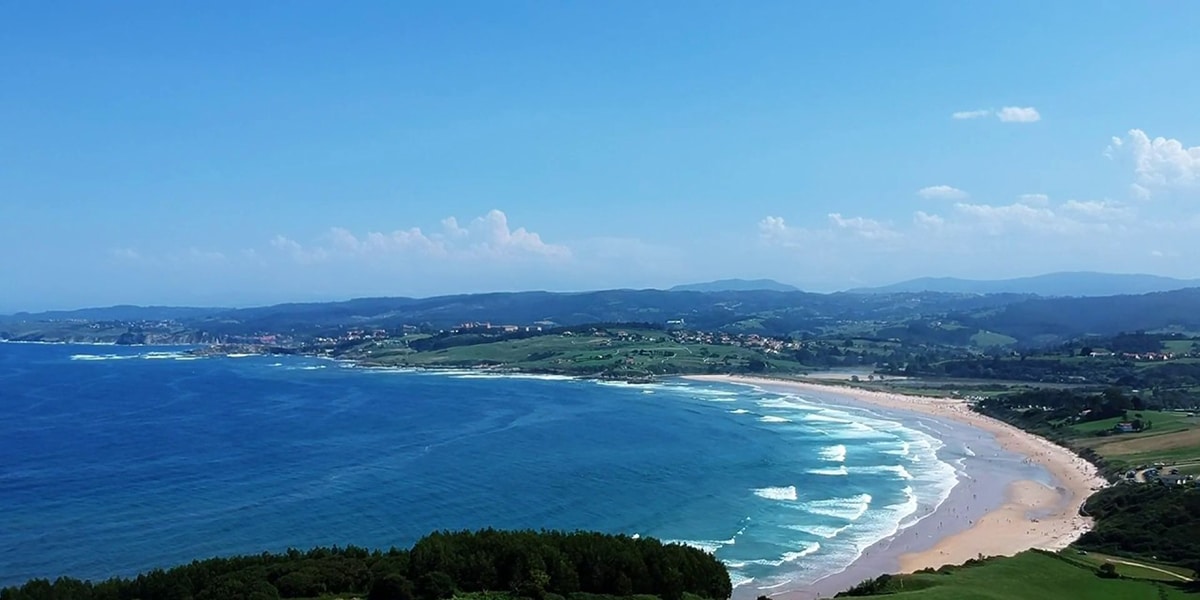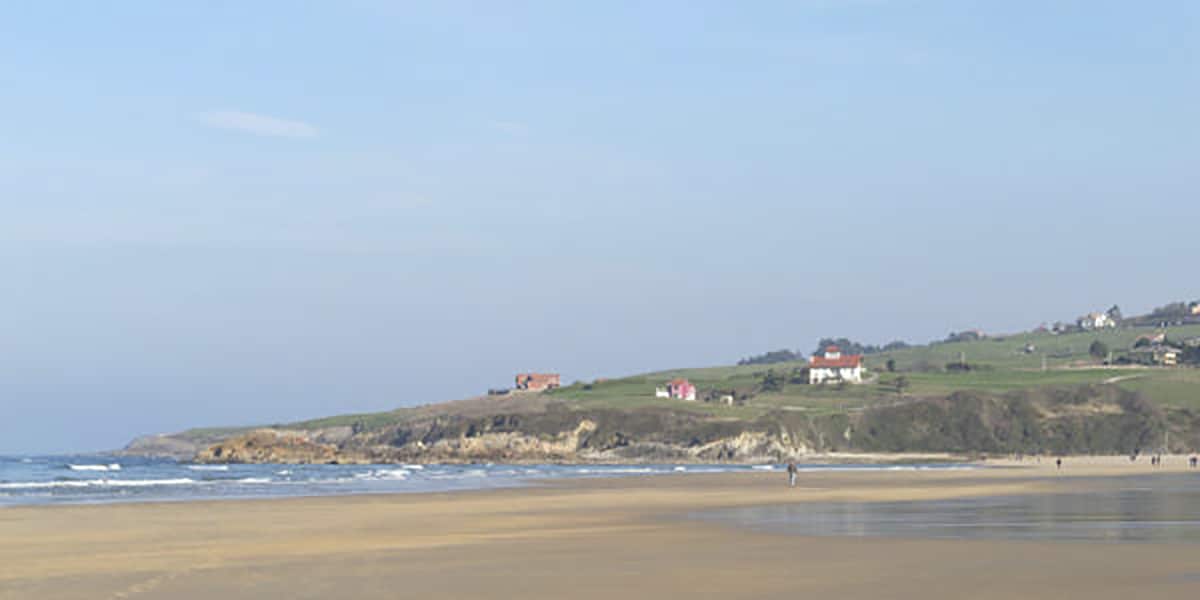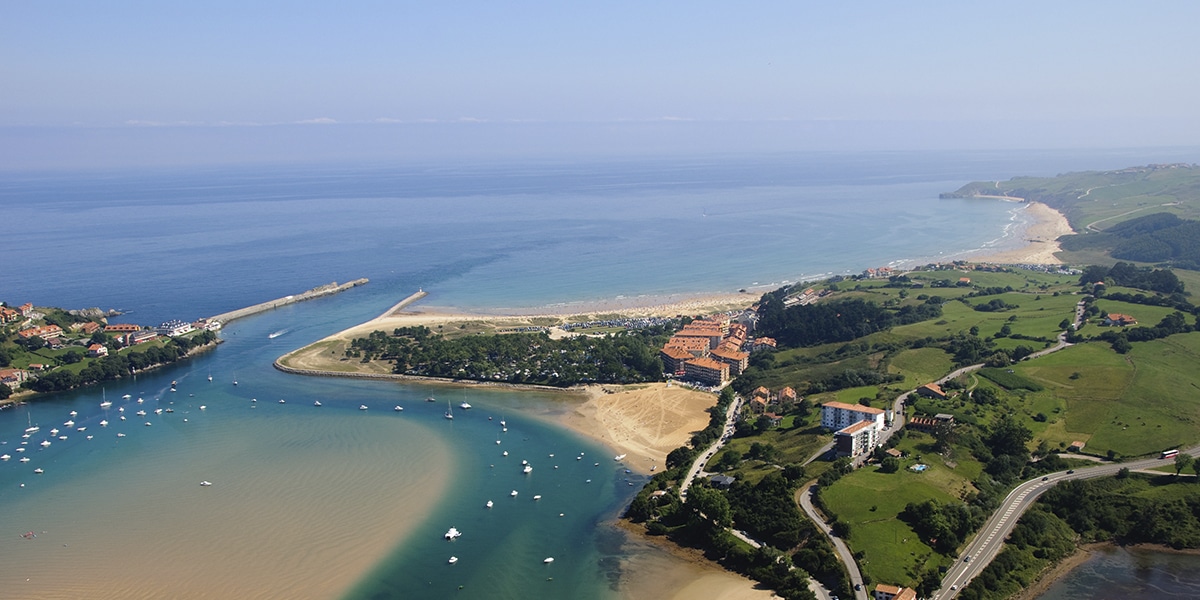
In the community of Cantabria we can find spectacular beaches and natural landscapes, making it difficult to choose one of them. Oyambre Beach is considered one of the most beautiful and that is why we are going to talk about it and the environment in which it is located. It is a beach located in the town of Valdáliga and San Vicente de la Barquera.
La nice beach of Oyambre is a really beautiful place With about two kilometers in length that is an essential visit if we stay in San Vicente de la Barquera, a very beautiful tourist place. It is located within the Oyambre Natural Park and therefore also has a great ecological value.
How to get to Oyambre beach
This beach is located in an easily accessible place since it is close to Santander. If you arrive in Santander you can then take the A-7 to Torrelavega and then the A-8 to San Vicente de la Barquera. When we get to this municipality we have to take the CA-236 road that takes us directly to the Oyambre Natural Park and to this beautiful beach. From Asturias we can also take the E-70 road and then the A-8 to San Vicente de la Barquera. It is easy to get to this municipality from various points because the highway passes through it, so getting to the beach is quite easy.
Oyambre Natural Park
This beach is located within a beautiful protected natural park. This park is distributed between different municipalities, Comillas, San Vicente de la Barquera, Udías, Valdáliga and Val de San Vicente. This area has been a natural park since 1988. This park includes the estuaries of the San Vicente estuary and the Rabia estuary. It is an ecosystem in a coastal area where we can find dunes, forests and estuaries with exceptional flora and fauna. Here you will find many aquatic birds that rest in the area during migrations.
Oyambre Beach

This is a beach of fine golden sand with some waves. We know that the beaches in Cantabria are quite open and stand out for having waves, so they are perfect for sports such as surfing or windsurfing. As for its services, there is a nearby car park and it is also possible to get there by public transport, at least in season. There is a camping area and during the season you can also find nearby beach bars to buy something to cool off. With being a popular and very beautiful beach, its occupation is average. In the case of families, it is always necessary to be careful with the waves because depending on the day it is not recommended that children bathe. In season there is also lifeguard service. We must take into account the flags that wave because they tell us if we can bathe or if it can be dangerous. With a green flag bathing is allowed, with yellow you have to take certain precautions and with a red flag it is better not to bathe. On the other hand, some prohibitions must be taken into account, because dogs are not allowed on the beach, nor can you play with balls or shovels or throw garbage.
Nearby areas
This beach is very beautiful but it also allows us to see some nearby areas for sightseeing. There are other beaches that are nearby, such as the El Cabo beach in San Vicente de la Barquera about two kilometers or Comillas beach in Comillas about four kilometers.
San Vicente de la Barquera

This small town was founded in the XNUMXth century by Alfonso I and here he built his castle, around which this town would be organized. It is a place that we pass through if we go to Asturias and that is also located on the well-known Camino de Santiago, so it has more and more tourism. One of the things that we can see in this town is the beautiful Puente de la Maza, a stone bridge from the 32th century that was built on the oldest wooden bridge. It had XNUMX arches and there is a legend that says that if you make a wish and cross the bridge holding your breath, the wish will be fulfilled.
Another of the places that we can see in this town is the Convent of San Luis, a Gothic-style construction of the Franciscan order. The old area of the town offers us many examples of ancient architecture, such as the Torre del Proboste, a XNUMXth century tower that is attached to the old wall. Another of its points of interest is the church of Santa María de los Ángeles in the upper area of the town. A beautiful church that was built until the XNUMXth century and offers a great example of the Gothic mountain style. It is worth seeing both the interior and the exterior, since it was also declared a Site of Cultural Interest.